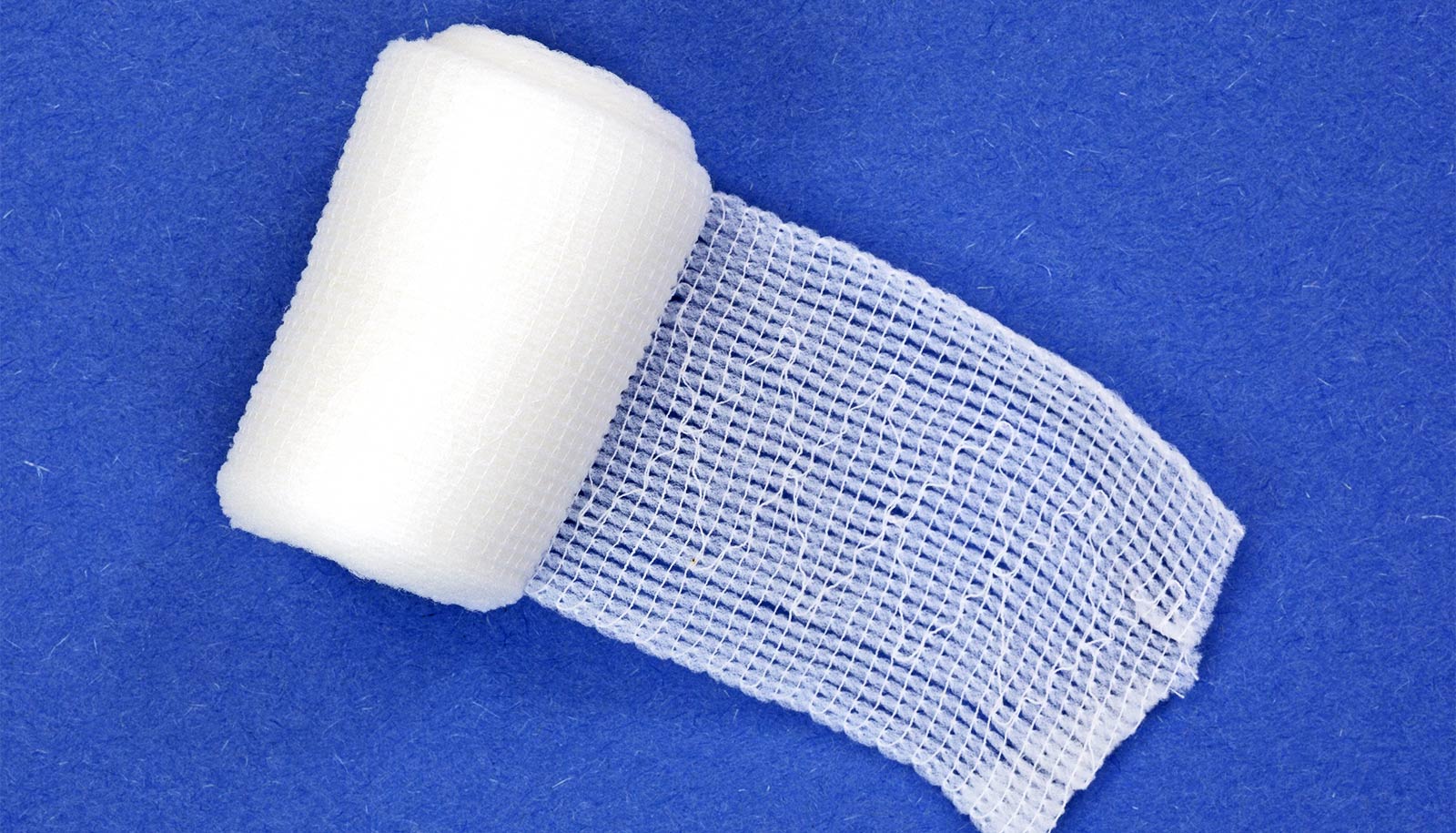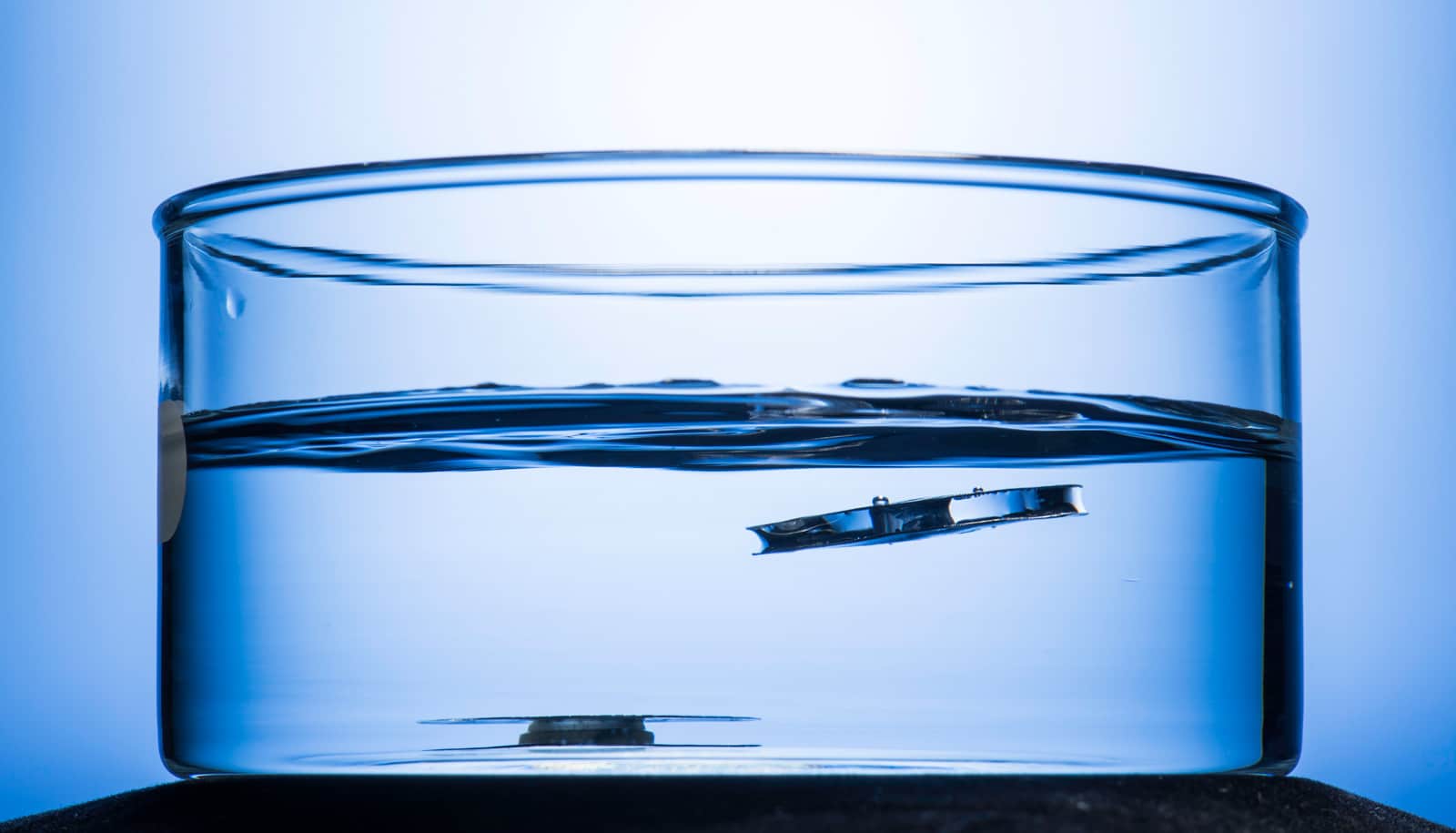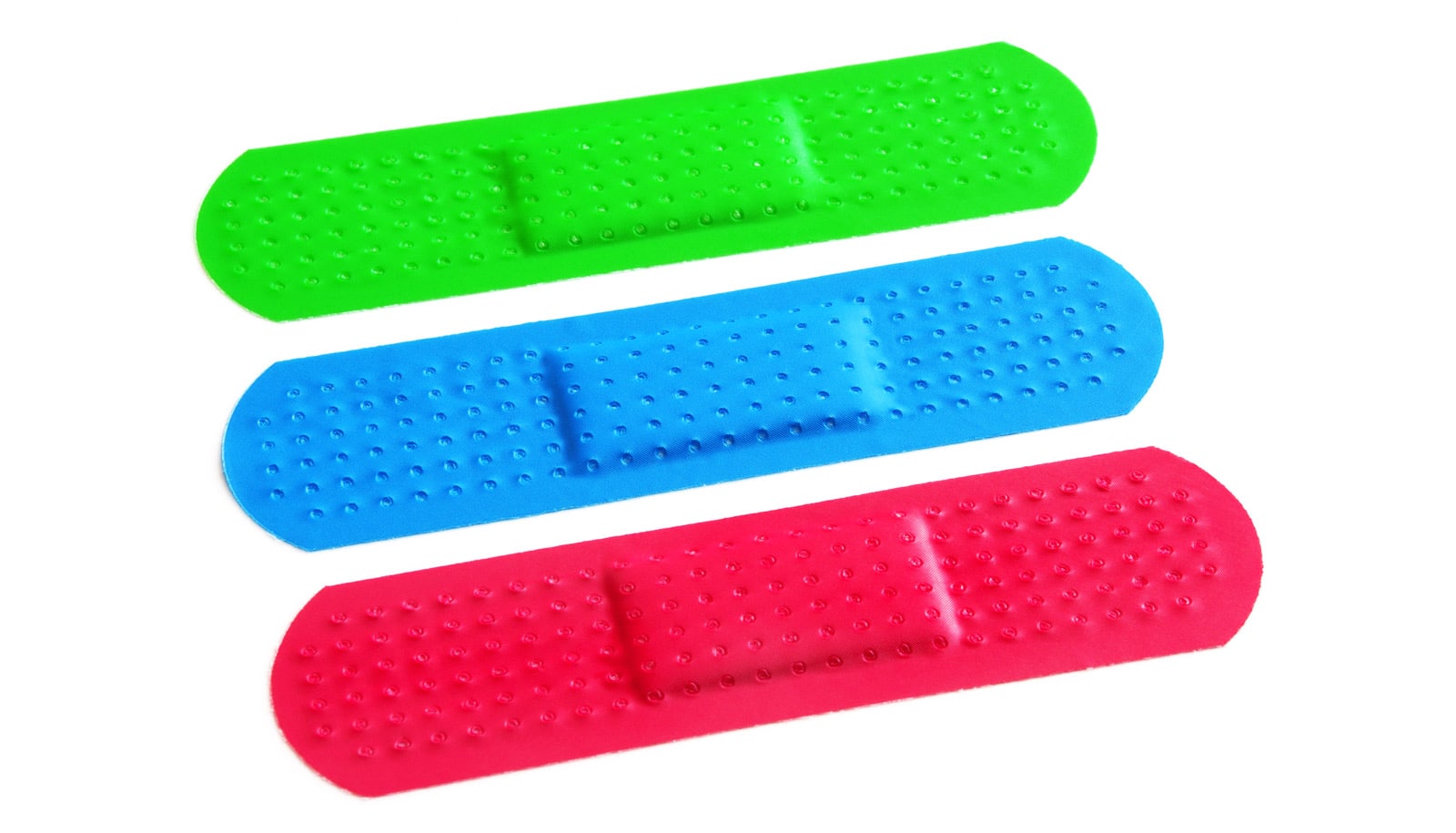A new kind of bandage helps blood clot without sticking to wounds, researchers report.
The new work marks the first time that scientists have combined both properties in one material.
“We did not actually plan this, but that is just how science works sometimes: you start researching one thing and end up somewhere else,” says Dimos Poulikakos, professor and chair of thermodynamics at ETH Zurich.
Scientists from his group and the National University of Singapore developed and tested various superhydrophobic materials—which, like Teflon, are extremely good at repelling liquids like water and blood.
They set out to find coatings for devices that come into contact with blood, such as heart-lung machines or artificial heart devices, for example.
One of the materials they tested demonstrated some unexpected properties: not only did it repel blood, but it also aided the clotting process. Although this made the material unsuitable for use as a coating for blood pumps and related devices, the researchers quickly realized that it would work ideally as a bandage.
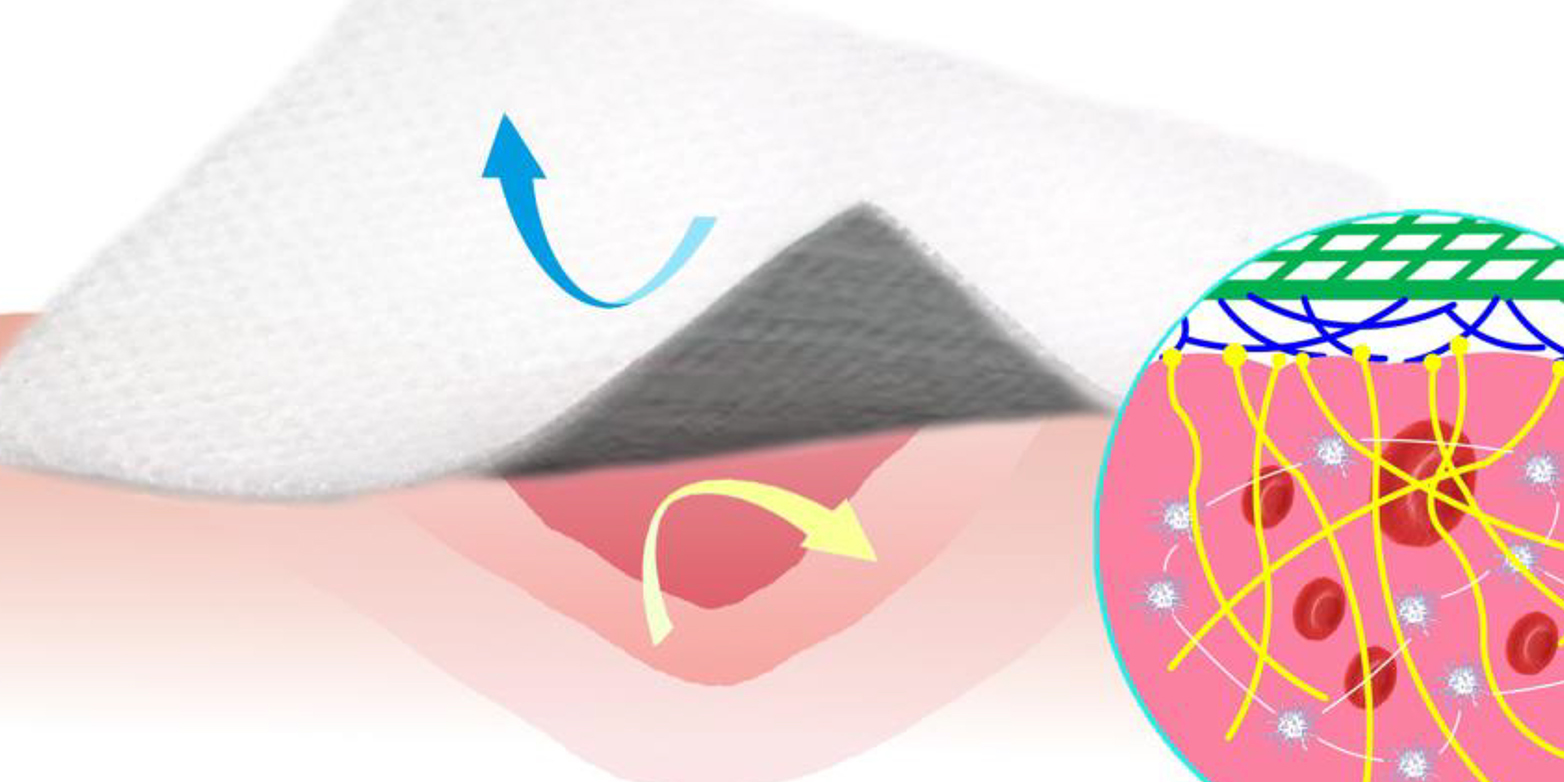
Two-in-one bandage
Repelling blood and achieving fast clotting are both beneficial properties in bandages: blood-repellent bandages do not get soaked with blood and do not adhere to the wound, so they can be easily removed later, which avoids secondary bleeding.
Substances and materials that promote clotting, on the other hand, stop bleeding as quickly as possible. However, to date, no materials that simultaneously repel blood and also promote clotting have existed.
The researchers took a conventional cotton gauze and coated it with the new material—a mix of silicone and carbon nanofibers. Laboratory tests showed that blood in contact with the coated gauze clotted in only a few minutes. Exactly why the material triggers blood clotting will require further research, but the team suspects that it is due to the interaction with the carbon nanofibers.
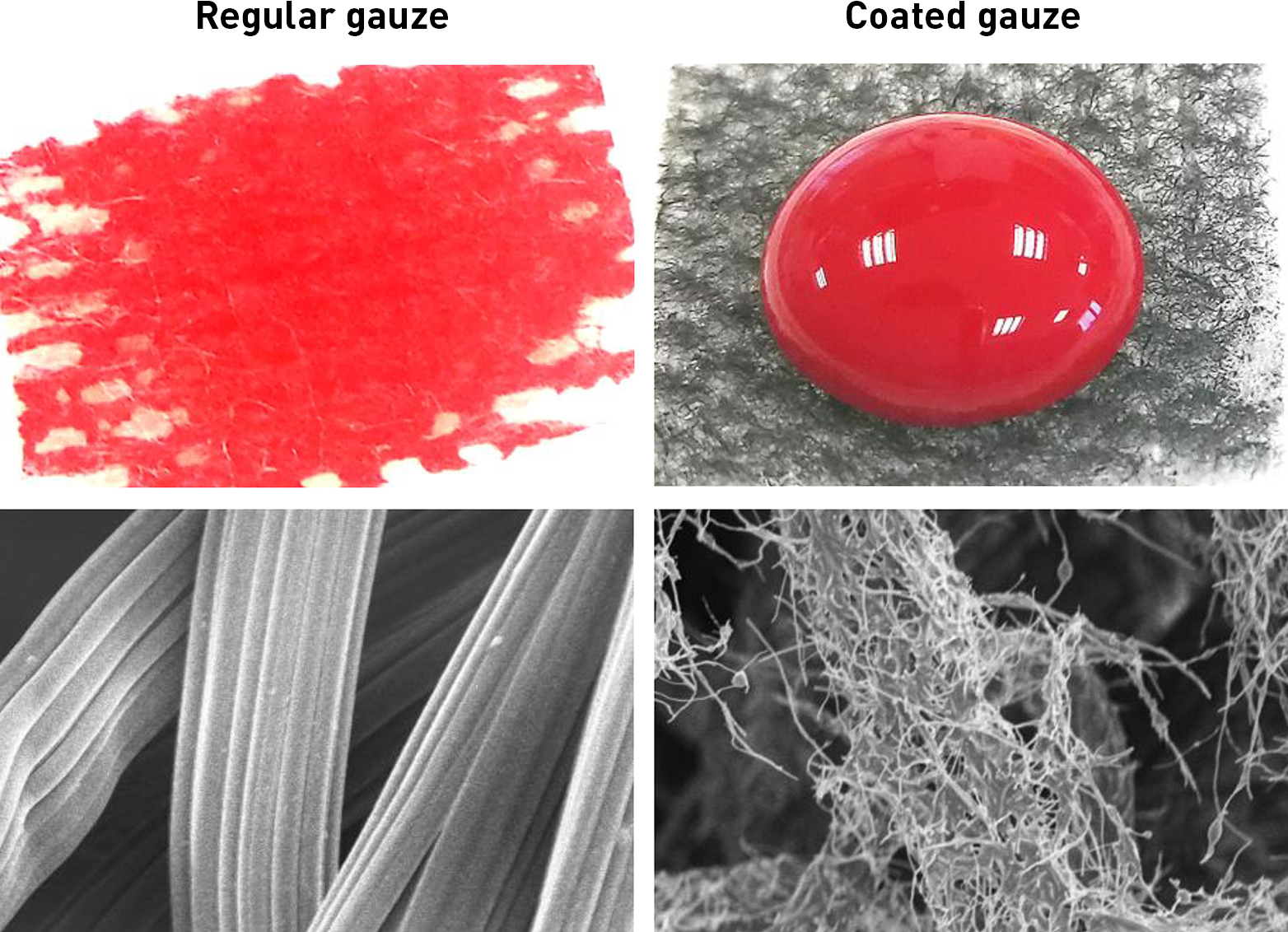
The researchers also showed that the coated gauze has an antibacterial effect, as bacteria have trouble adhering to its surface. Animal tests with rats demonstrated the new bandage’s effectiveness.
Emergency surgery and home care
“With the new superhydrophobic material, we can avoid reopening the wound when changing the bandage,” says Athanasios Milionis, a postdoctoral researcher in Poulikakos’s group. “Reopening wounds is a major problem, primarily because of the risk of infection, including from dangerous hospital germs—a risk that is especially high when changing bandages.”
The potential applications for the bandage range from emergency medicine and surgery for avoiding major blood loss to plasters for use in the home and on the go.
A paper describing the material appears in Nature Communications.
ETH Zurich and the National University of Singapore have applied for a patent for the new material. In the meantime, the researchers need to refine and optimize the material before it can be used on humans. They also say they need to conduct further testing, first on larger animals and then on humans, to prove its effectiveness and harmlessness.
Source: ETH Zurich
